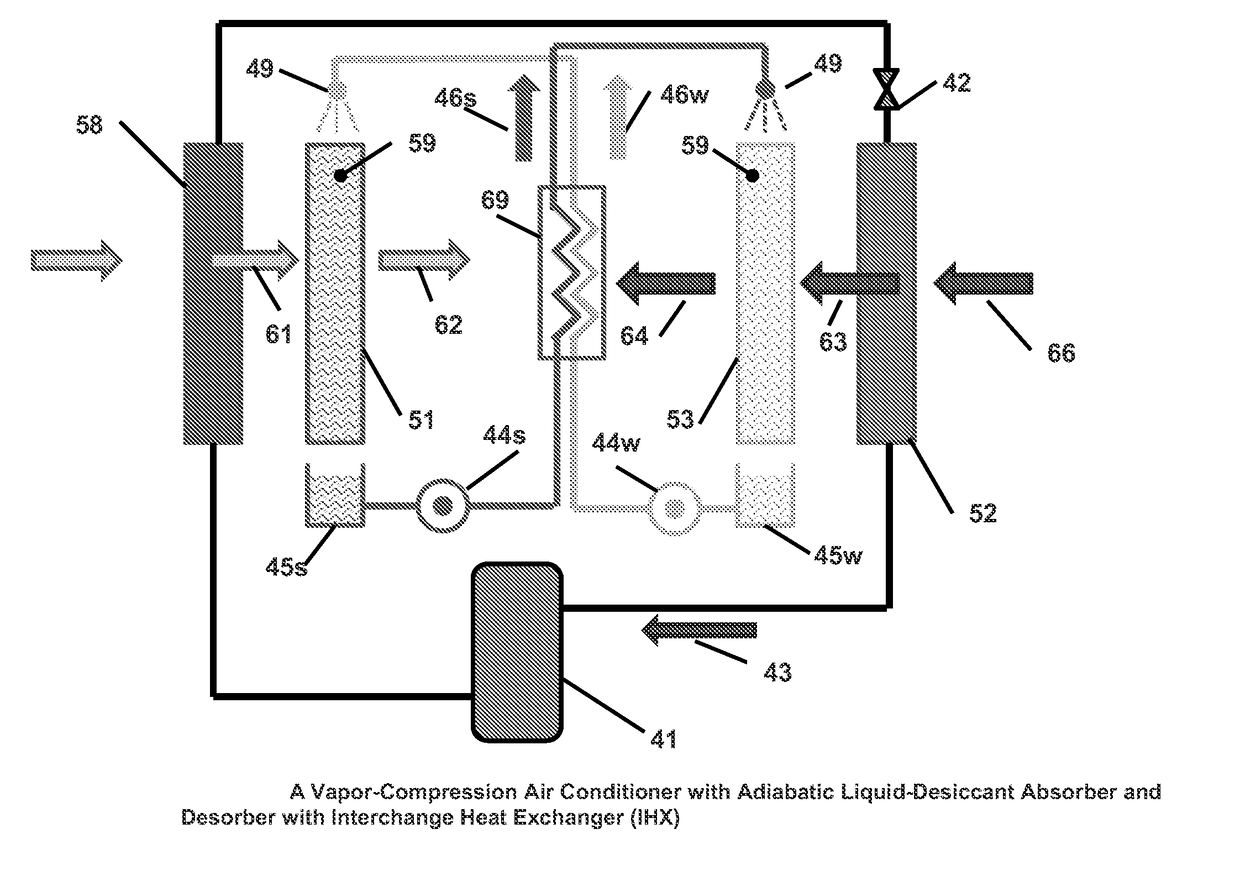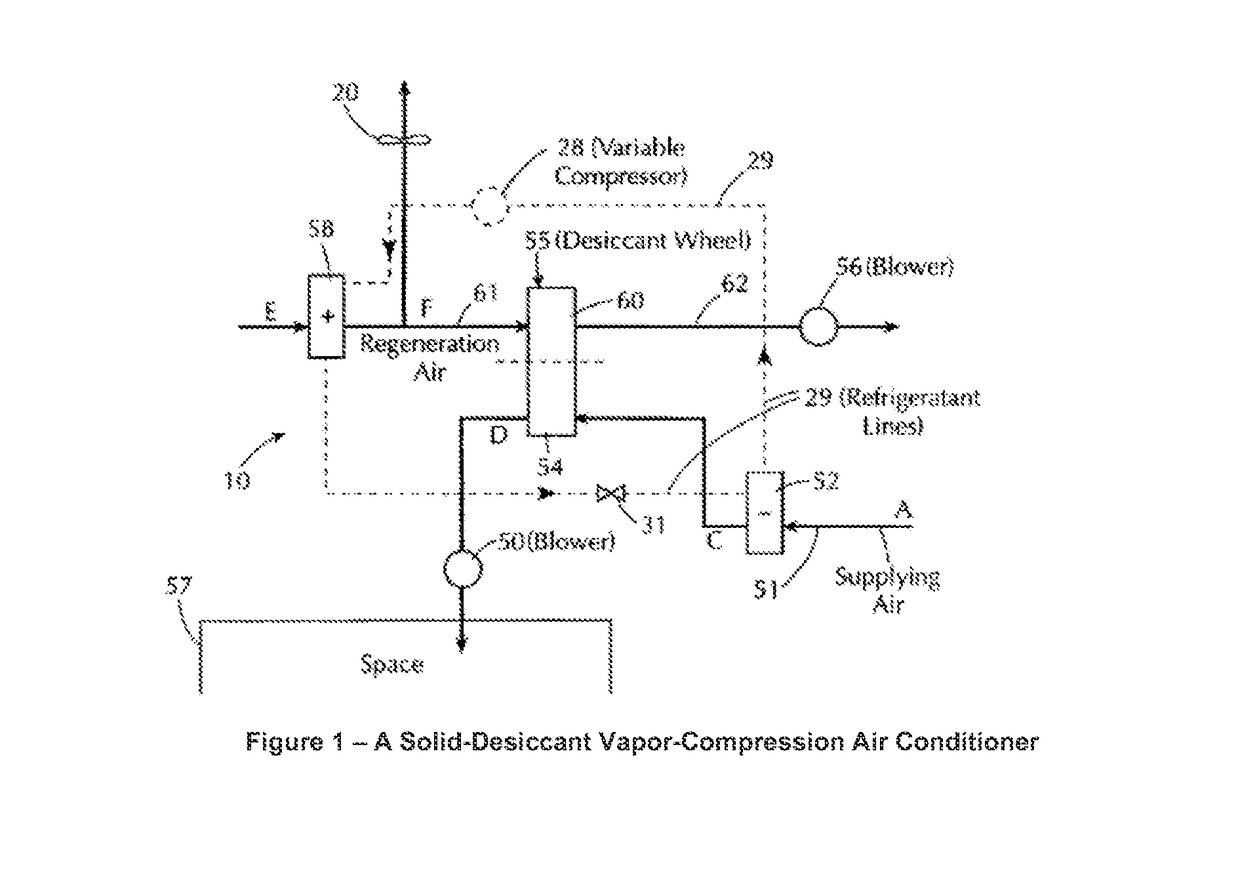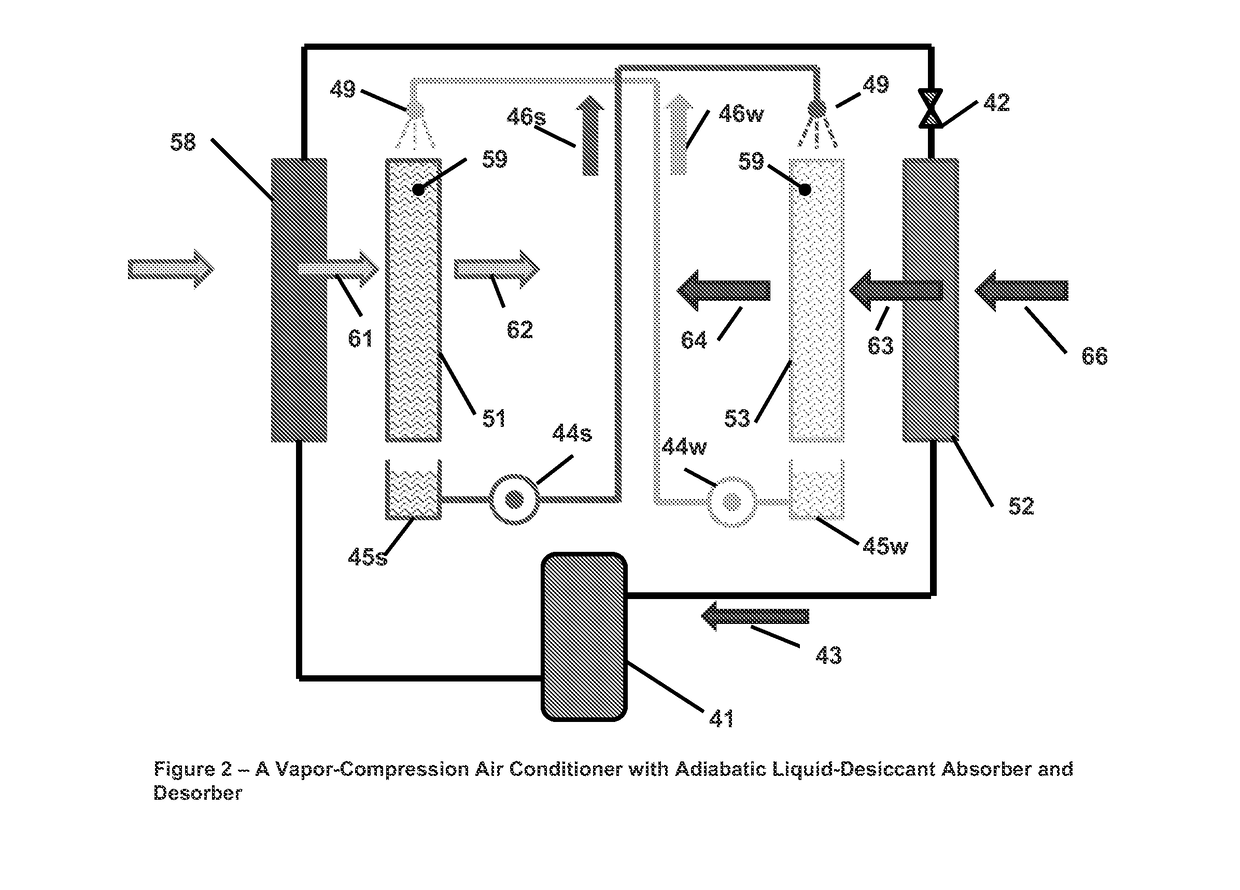Methods for enhancing the dehumidification of heat pumps
- Summary
- Abstract
- Description
- Claims
- Application Information
AI Technical Summary
Benefits of technology
Problems solved by technology
Method used
Image
Examples
Embodiment Construction
[0056]The invention claimed here and the benefits it provides can be appreciated by comparing its operation to that of the technology described in the Dinnage patent. FIG. 1 is a block diagram of a vapor-compression air conditioner as disclosed in the Dinnage patent. It shows a vapor-compression air conditioner in which a stream of supply air is cooled in a refrigerant evaporator (52) and a stream of regeneration air is heated in a refrigerant condenser (58). The cool, saturated supply air that leaves the refrigerant evaporator (52) is dried as it passes through the process sector (54) of a rotating desiccant wheel (55). The water absorbed by the desiccant is rejected to the regeneration air as the wheel rotates and what was the “process sector” becomes the “regeneration sector” (60) where the desiccant is heated by the regeneration air.
[0057]Although illustrated as applied to a vapor-compression air conditioner, the technology described in the Dinnage patent can increase the latent...
PUM
 Login to View More
Login to View More Abstract
Description
Claims
Application Information
 Login to View More
Login to View More - Generate Ideas
- Intellectual Property
- Life Sciences
- Materials
- Tech Scout
- Unparalleled Data Quality
- Higher Quality Content
- 60% Fewer Hallucinations
Browse by: Latest US Patents, China's latest patents, Technical Efficacy Thesaurus, Application Domain, Technology Topic, Popular Technical Reports.
© 2025 PatSnap. All rights reserved.Legal|Privacy policy|Modern Slavery Act Transparency Statement|Sitemap|About US| Contact US: help@patsnap.com



